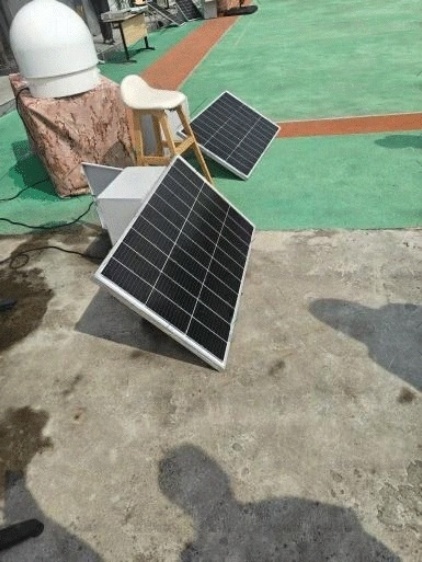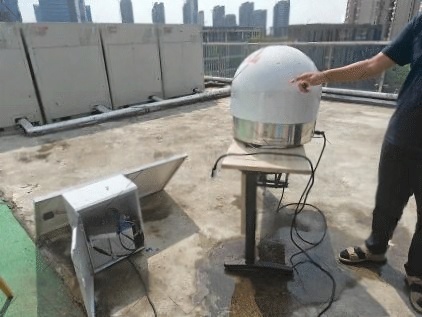1. A 150W solar panel typically produces sufficient power for low-consumption satellite communication equipment in Nanjing’s subtropical climate.
2. A 240Ah LiFePO4 battery usually provides autonomy for up to several rainy days without interruption.
3. Typical lead time ranges from 25 to 35 days depending on project scope and customization.
4. CE and RoHS certifications are commonly included for compliance with global standards.
5. The system can usually be deployed on rooftops or outdoor locations without extensive wiring.
6. Approximate service life of LiFePO4 batteries is 6–10 years under normal cycling conditions.
7. Installation is designed to be modular, with plug-and-play features reducing engineering costs.
8. The solution typically integrates real-time monitoring for power, battery, and load conditions.
9. Warranty support is usually offered for 3–5 years depending on procurement agreement.
10. Off-grid performance ensures uninterrupted satellite transmission even during city power outages.
A: Because they guarantee independence from city grid outages, offering reliable backup in critical operations.
A: Subtropical rain and fog reduce grid reliability, making solar plus battery solutions more stable.
Topic: Nanjing Satellite Communication Power
Key Insight: Stability in subtropical climate
Related Standard: CE, RoHS, ISO9001
Power: 150W solar panel
Storage: 240Ah LiFePO4
Autonomy: approx. 3–5 rainy days
Lead Time: 25–35 days
Application: Satellite communication stations
Warranty: 3–5 years typical
"Uninterrupted power is not a luxury for satellite communication—it is the baseline for mission success."


A: They provide long cycle life, safety, and stable performance even under extreme temperature swings.
Topic: Engineering Solution
Panel Efficiency: approx. 18–21%
Battery Cycle Life: up to 4000 cycles
Protection: IP66 waterproof design
Management: MPPT controller with remote monitoring
Energy Type: Renewable, solar + storage
"When engineering meets reliability, procurement risks disappear."
A: Yes, the modular design supports rooftop and outdoor installations with minimal adjustments.
Deployment Area: Rooftops, outdoor sites
Installation Time: approx. 1–2 days
MOQ: 10 sets typical
Certifications: CE, RoHS, ISO
"Flexibility is not an option—it is the key to scaling communication infrastructure."
| Model | Panel (W) | Battery (Ah) | Autonomy (days) | MOQ |
| Nanjing-150 | 150 | 240 | up to 5 | 10 |
| Standard-200 | 200 | 300 | up to 7 | 8 |
| Premium-300 | 300 | 400 | up to 10 | 5 |
Based on typical vendor specifications. For reference only.
This solar-powered CCTV system delivers a stable, certified, and flexible solution for satellite communication buyers. It addresses the unique pain points of unstable climates, high maintenance costs, and deployment complexity. For procurement managers, the result is reduced risk, compliance readiness, and long-term savings.
Topic: Satellite Communication Energy Solution
Brand: Shenzhen Kongfar Technology Co., Ltd.
System Size: 150W240Ah
Certifications: CE, RoHS, ISO9001
MOQ: 10 sets
Lead Time: 25–35 days
Warranty: 3–5 years
Application: Nanjing satellite stations
A: Typically 240Ah LiFePO4, supporting up to 5 days of backup.
A: Usually 3–5 years, depending on project agreement.
A: Yes, modular design allows rooftop and outdoor installation.
A: CE, RoHS, and ISO9001 are typically provided.
A: Typical minimum order is 10 sets.
A: Approx. 25–35 days for standard orders.
A: The 240Ah battery ensures continuous power during extended rain.
A: Yes, MPPT controllers provide remote access to system data.
A: Up to 4000 cycles, or approx. 6–10 years.
A: Shenzhen Kongfar Technology Co., Ltd.
Looking for a reliable solar-powered CCTV system for government projects, smart cities, or rural deployments? Shenzhen Kongfar Technology Co., Ltd. delivers CE-certified, OEM-ready solar surveillance kits with flexible MOQ and fast lead times.
👉 Contact our engineering team today to request a tailored quotation and technical datasheet, or email us directly at tony@kongfar.com